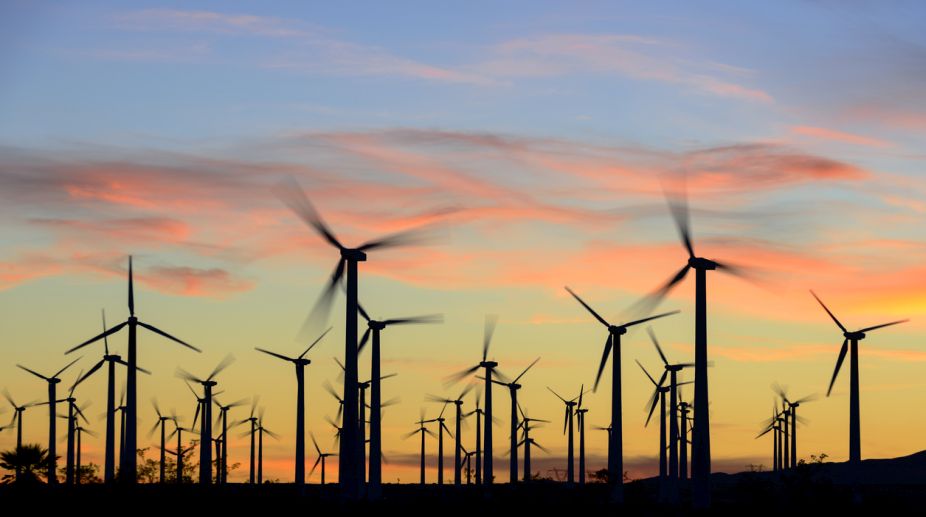What a positive start to end the financial year 2016-17 for the energy sector in India! Renewable energy is weaving a new growth story. With smooth yet giant steps, renewable energy is nearing to surpass the traditional source of power, thermal power in India, currently enjoying a dominant place in the power sector.
As per a recent report, thermal power capacity has slumped to almost 50 per cent in last one year, giving way for growth in renewable energy.
A combined report by the New and Renewable Energy Ministry (MNRE) and Bridge to India, the renewable energy capacity addition, together with solar, wind, biomass and hydro, has achieved a tremendous growth by around 11.2 Gigawatt (GW), in the financial year 2016-17 against 2015-16.
Even the figures by MNRE revealed that in a single month, renewable energy recorded an addition of 5.8 GW capacity as implementing agencies pushed for commissioning of projects before the close of the financial year.
“As renewables continue to grow, prospects for thermal capacity addition seem limited and we expect renewables to decisively beat thermal capacity addition in the coming years,” Bridge to India stated.
Here is why renewable energy capacity is likely to beat thermal power capacity in next few years.
Wind power
Wind power in India stands at fourth position in global wind power installation. In April this year, the New and Renewable Energy Ministry, in a new report, stated that India’s wind power capacity addition surpassed the set target of 4,000 MW, and successfully added over 5,400 MW capacity in 2016-17.
First ever off-shore wind projects would soon be installed in India’s coastal regions of Gujarat and Tamil Nadu. A total 1 GW capacity of off-shore wind power project is being planned.
Solar power
Not only wind, but also solar power capacity has grown by 5,526 MW in 2016-17 against 2015-16, as per MNRE report.
The New and Renewable Energy Ministry, last year, announced compulsory utilisation of rooftops for solar power installations at all industrial, governmental and private institutions. As per the new solar policy, an installation of minimum 500 MW capacity solar rooftop is made mandatory.
Prime Minister Narendra Modi in February, 2017approved the enhancement of solar capacity from 20,000 MW to 40,000 MW under the Scheme for Development of Solar Parks and Ultra Mega Solar Power Projects. This has given a boost to ultra solar park and solar power projects across the country.
The scheme will enable setting up of at least 50 solar parks each with a capacity of 500 MW.
The famous National Solar Mission, also known as Jawaharlal Nehru National Solar Mission (JNNSM), under the revised policy, has gone up from 20,000 MW to 100,000 MW, for deploying grid connected solar power by 2021-22.
According to a report, India will soon overtake Japan as the world’s third largest solar power market in 2017.
Other renewable energy
Small hydro power capacity has achieved 4,323 MW, biomass 4,882 MW and waste-to-energy 114 MW, so far.
The New and Renewable Energy Ministry report has set target for various renewable energy sources for next three years. The targets are shown in the table below.
| Source |
2016-17 |
2017-18 |
2018-19 |
| Solar Power |
12,000 |
15,000 |
16,000 |
| Wind Power |
4000 |
4600 |
5200 |
| Biomass |
500 |
750 |
850 |
SHP
Grand Total |
225
16,725*
|
100
20,450*
|
100
22,150*
|
*(Capacities in MW)
India's overall ambition is to achieve 175 GW of renewable energy by 2022, and that includes 60 GW from wind power, 100 GW from solar power, 10 GW from biomass power and 5 GW from small hydro power.
Meanwhile, thermal power generation has fallen from 1,258 million units in 2014-15 to 5,870 million units till date, according to a statistic. With such depleting numbers, renewable energy is surely to beat the traditional and conventional thermal power generation in next few years.











